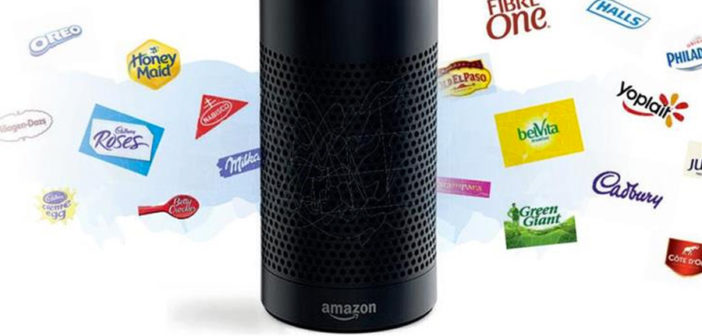Amazon is set to equal Facebook as a means of influencing consumer behaviour, and challenge Google in delivering customer understanding, writes NewBase’s global head of digital products.
Amazon is an unstoppable growth engine that is showing no signs of slowing. From the success of its core e-commerce business, to newer ventures such as Prime, and its acquisition of Whole Foods, there is scarcely a sector that has not been touched by the company.
Now Amazon is training its sights on the advertising business.
Many marketers are likely to welcome Amazon’s intent to become a significant advertising player, not least given the rising concerns about the so-called ‘duopoly’ dominance that Facebook and Google exerts over the digital ad market.
However, Amazon uniquely can see the whole consumer journey, right through the funnel, and it is increasingly important as a product search engine. In the US, Amazon is now the default shopping search engine, with double Google’s product searches, and brands are reacting accordingly, cosmetics giant L’Oréal announced that it is allocating a portion of its search budget to Amazon.
With millions of UK and US households enjoying the tones of Amazon Echo’s Alexa AI assistant, this search evolution is likely to accelerate in the direction of voice – something that will further benefit Amazon.
It shows that something more profound than a shift in ad dollars is afoot. Amazon has traditionally been viewed as important in the last stage of the consumer purchase journey, meaning any ad investment would reflect that stage in the funnel. Now, with Amazon playing an active role in shaping consumer perceptions, it offers another route by which brands can understand their target consumers, and their purchase motivations.
A new avenue is also opening in the pursuit of influencing consumer behaviour. Amazon’s unrivalled customer data and suite of powerful ad tech tools open up new possibilities for brands. As the world’s marketplace, it knows what people have bought in the past, are buying now, and are likely to buy in the future – with the latter insights derived from people’s searches. It has years and years of data on repeat consumers; these are not window shoppers, these are people who buy.
This enables far better predictions and targeting, and increases Amazon’s ability to provide useful advertising solutions that help brands to encounter new customers rather than simply re-targeting existing ones. Amazon understands that the moment people start searching for a specific brand that they could be directed towards similar products. This means Amazon’s ad tech will appreciate that someone searching for waterproof mascara in July might also be in the market for flip-flops, a bikini and a trashy novel. Then Ms Mascara could be served ads/promotions for these or other holiday-related products.
Consumers already consider Amazon’s recommendations to be helpful, appropriate and natural. Done well, this will be a natural evolution and it offers the chance for brands to be weaned off the habitual retargeting of the same audience, which when repeated too often – as well we all know from experience – can be irritating and off-putting. It also helps to alleviate the dependence many brands have developed on Facebook when it comes to finding new consumers.
Amazon’s new self-serve platform, Advertiser Audiences, was rolled out earlier this summer, and is proving transformative in how brands seek out new audiences. Advertisers are able to anonymously match a list of their customers with Amazon shoppers and find “lookalike” targets that may be interested in, say, a specific type of shoe, but had not yet shown any intention of shopping for that item.
Beyond all this ad tech, Amazon also recognised that there was a gap in its brand offer, until recently some brands were reluctant to appear on the site as they did not have enough control over the experience, so it has just launched brand stores.
Amazon’s strength is plain to see, with hundreds of millions of active customers, and as it’s a buying environment, this is what will drive brands to invest with Amazon. However, Amazon won’t be the best home for all ad dollars; it’s not geared towards creating a brand, marketers with highly limited adspend will be better off using other tactics to establish and build a brand.
Over the next five years Amazon will be a significant advertising player – even more so if it launches its own phone; a real game-changer for accessing customer data and usage habits – and will probably come to equal Facebook in terms of both its targeting ability and as a platform to influence consumer behaviour. However, it’s not a zero sum game; it’s likely to be new spend that targets Amazon rather than moved from Google or Facebook.
For marketers, this rising opportunity can only be a good thing. Google and Facebook will remain vitally important components of most digital media strategies, and their influence in the industry will remain great. However, with Amazon emerging as a third force, the dependency on those two players will be diminished – allowing brands to develop more sophisticated and more influential marketing campaigns.
–
This article first appeared in www.campaignlive.com
Seeking to build and grow your brand using the force of consumer insight, strategic foresight, creative disruption and technology prowess? Talk to us at +9714 3867728 or mail: info@groupisd.com or visit www.groupisd.com


